Lightning forks overhead as rain from the Congo rolls in across Lake Albert. A foreman on the East African Crude Oil Pipeline, or EACOP, ushers workers under a corrugated steel roof that becomes percussion for the downpour. “Bush music,” he says.
This team, working on the world’s longest heated oil pipeline, faces challenges from forest fires to deadly snakes as it clears land from the heart of Africa to the Indian Ocean. Each day of heavy rain brings four days of disruption — and in Uganda about half of the year is the rainy season.
Yet the most worrisome delaying force at Pump Station One, the start of EACOP near the small city of Hoima, isn’t weather, fire, or snakes. It’s money. A megaproject that has drawn together the fortunes of French energy giant TotalEnergies, unpredictable Chinese backers, and big Persian Gulf investors still doesn’t have its funding entirely in place.
ENERGY SECRETARY FACES GRILLING ON LOW U.S. OIL SUPPLIES
If completed, EACOP will meander almost 900 miles and carry up to 246,000 barrels of crude a day to the Tanzanian port of Tanga, about half as much as the Keystone pipeline carries into the U.S. from Canada. It will transport a type of waxy oil that isn’t normally liquid at surface temperature, and needs to be heated to keep flowing.
Heating a pipeline in Africa, where electricity can be scarce, is one reason that EACOP is among the most ambitious and technically difficult energy projects on the continent. It is a jagged, $10 billion steppingstone that could transform Uganda’s economy — and provide the world with a new source of oil at a time when conflicts in Ukraine and the Middle East have raised supply fears. Western lenders have shunned EACOP amid environmental and human-rights concerns, however, leaving Beijing, long a reliable lender to the developing world and already involved in Uganda’s oil fields, as EACOP’s obvious savior.
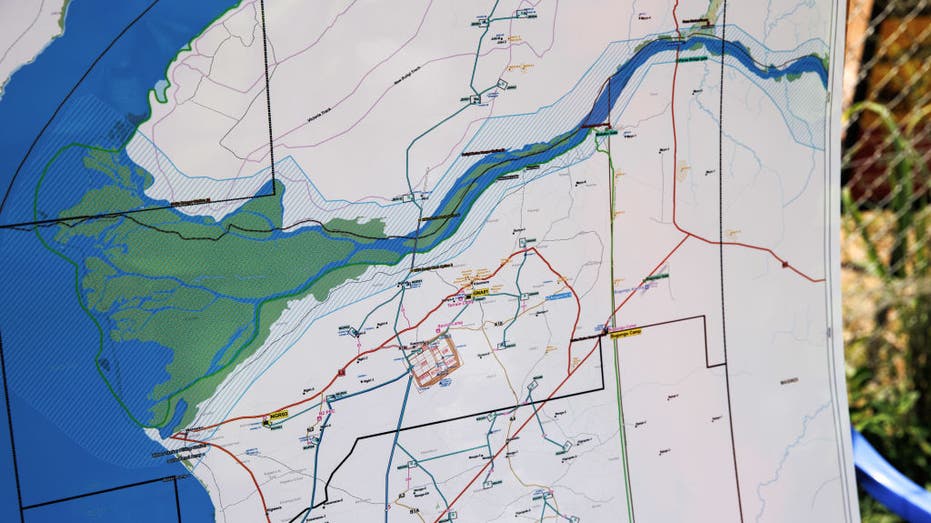
But China, which is dealing with slowing economic growth and other problems back home, appears to be getting cold feet about the massive project, and Ugandan officials expect China to contribute only part of what they originally expected. China’s decision on the pipeline will shed light on whether it still wants to regularly fund legacy megaprojects in the developing world.
China’s deliberation and years of delay put the future of the project in jeopardy as construction continues to burn cash. TotalEnergies, EACOP’s biggest corporate backer, faces lawsuits from activists and pressure from shareholders on climate goals after years of delay on the pipeline. In a worst-case scenario, Total may face a multibillion-dollar write-down on its investment in East Africa, which would hit its earnings and probably the stock.
In Uganda, EACOP has sparked domestic unrest, but the government remains reluctant to abandon a generational chance to transform one of the world’s poorest countries.

“We are at a point of no return,” says Irene Batebe, Uganda’s most senior energy civil servant. But even workers at Pump Station One know that EACOP is in trouble; they grumble about delays in between showing videos of a cobra they caught the day before. The first oil hitting Tanga “will be a dream,” one worker says.
Officials were more optimistic as recently as September, when Batebe told the South China Morning Post that Beijing, through its Export-Import Bank, or EXIM, and Export & Credit Insurance Corp. (Sinosure), would provide more than half of the $3.05 billion in debt financing needed, with smaller lenders taking up the rest of the slack.
The goal posts have since shifted. Batebe told Barron’s in an interview that China is now expected to provide just $1.2 billion. Negotiations continue, and public targets to lock up debt financing for the project have been pushed back repeatedly.
Uganda is “absolutely” looking to partners in the Persian Gulf as an alternative source of financing, according to Odrek Rwabwogo, chairman of Uganda’s Presidential Advisory Committee on Exports and Industrial Development, or PACEID.
Persian Gulf money may already be in play. Of the $3.05 billion in debt financing that EACOP needs, some $2 billion has been committed by parties besides China, according to Batebe, who declined to give further details. Other confirmed lenders to the project are the African Export–Import Bank and the Saudi-based Islamic Development Bank, which have disclosed loans of $200 million and $100 million, respectively.
AI NEEDS ALOT OF ELECTRICITY, OIL WILL HELP

Crude Oil in the Pearl of Africa
It has been known for at least 100 years that oil lies near Lake Albert, a 99-mile-long body of water in the upper River Nile system over which Congo’s Blue Mountains loom. Serious exploration began in the 1980s, after Yoweri Museveni — Uganda’s current president — emerged in 1986 as victor in the Ugandan Bush War.
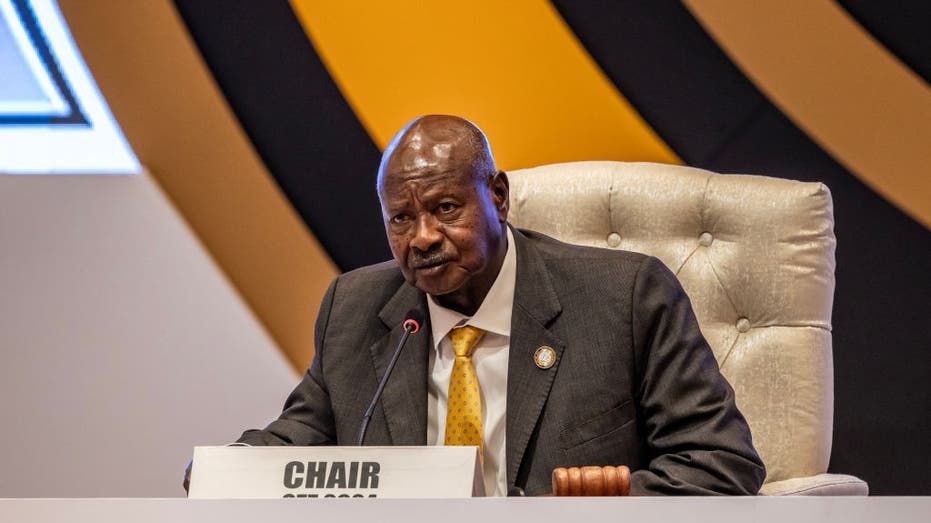
Tullow Oil led much of the exploration that created Uganda’s nascent petroleum industry, discovering about 1.4 billion barrels of recoverable oil around Lake Albert. Tullow sold the oil rights to TotalEnergies and China National Offshore Oil Corp., or Cnooc, in deals from 2012 onward, though it maintains an interest in the pipeline through agreed payments that would come after oil starts flowing.
EACOP will be fed from upstream facilities near Hoima operated by Total and Cnooc in co-ownership with Uganda National Oil Co., all three of which are partners in the pipeline alongside Tanzania’s national oil firm.
In the works since 2013, the project arose out of investors’ hesitation to spend billions of dollars getting oil out of the ground without a clear route to global markets. But EACOP was quickly bogged down by delays. First oil was initially projected for 2017, but even the most ambitious estimates suggest that crude won’t start flowing until 2025.
Things may have been different had EACOP plowed ahead earlier, when Beijing’s lending to Africa was peaking and China was emerging as the world’s largest marginal consumer of energy. In 2024, what once looked like a French bet on selling crude to the Chinese has yet to find an off-taker — or agreed buyer of oil — though negotiations are continuing, says Batebe.
While environmental, social, and governance factors are now at the heart of financing decisions, a decade ago they weren’t a big consideration. EACOP and its feeder oil fields will touch critical sources of freshwater in Africa, including the Nile, a river relied on by some 300 million people from Uganda to Egypt. Pipes will also skirt the shores of Lake Victoria, one of the world’s largest lakes.
“We have to protect these resources,” says Dickens Kamugisha, the executive director of the Africa Institute for Energy Governance, one of the main local organizations leading activism against EACOP.
The scale of the pipeline required land appropriation. “The project has already devastated thousands of people’s livelihoods,” says Myrto Tilianaki, a senior advocate for Human Rights Watch, adding that activists face harassment and arbitrary arrests.
EACOP, Total, and the Ugandan government dispute this. Officials describe mitigation measures to protect biodiversity, a land acquisition process that was transparent and fair, and respect for civil society. They add that while land belonging to thousands of people in Uganda and Tanzania has been impacted, less than 1,000 people have been physically displaced, and of those the vast majority opted for replacement houses provided by EACOP.
“There is what we call an oil-spill contingency plan,” says Bashir Hangi, chief spokesperson for the Uganda Wildlife Authority. “NGOs — they don’t want oil and gas activities, and I think that is unacceptable.”
Un Gros Risque
The long road between the capital of Kampala and the boomtown of Hoima is dotted with TotalEnergies gas stations, where longhorn ankole cattle cross paths with riders of motorcycle taxis.
Total has the most to gain or lose from EACOP as the majority shareholder in the pipeline, with a 62% stake and 57% of the upstream activities. Total values its investments linked to EACOP in both Uganda and Tanzania at $10 billion, the company confirmed to Barron’s.
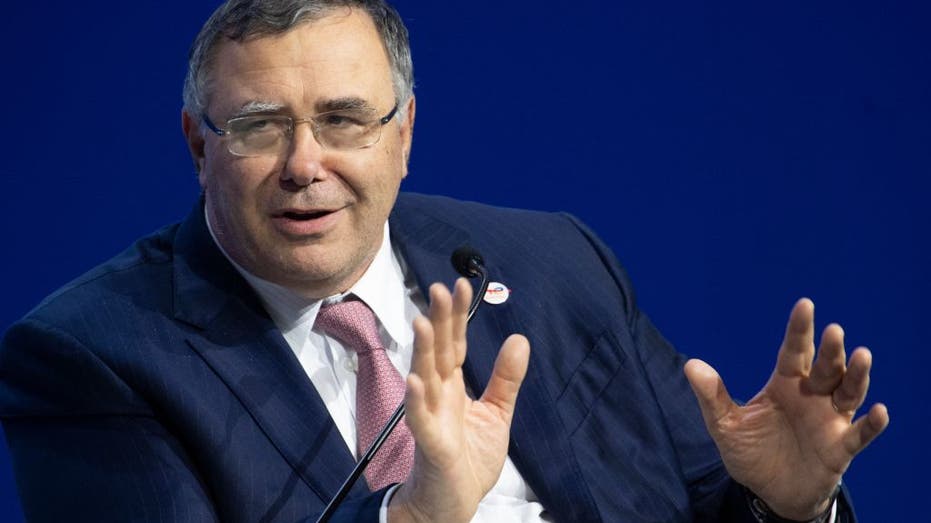
The oil fields in Uganda represent a “very important project,” said Total’s Chairman and CEO Patrick Pouyanné during an earnings call in February. The company is a key partner to Uganda, providing most of the $2 billion in equity financing that has bankrolled EACOP so far — and is now mostly spent.
If debt financing isn’t secured soon, work will grind to a halt or EACOP will need to raise more equity. The Ugandan government is in talks with Total about contributing more equity to the project, says Batebe, a civil servant who must face balancing the long-term goal of finishing EACOP with more pressing matters. Excusing her lateness to an interview, she said the source of the delay was a crisis at the capital’s main power plant, where a failure threatened to plunge Kampala into darkness.
Total didn’t comment on the prospect of committing more equity financing to EACOP.
Wall Street, for its part, seems confident that EACOP will be pulled off — but analysts are aware of the risks to Total.
| Ticker | Security | Last | Change | Change % |
|---|---|---|---|---|
| TTE | TOTALENERGIES SE | 72.03 | +0.40 | +0.56% |
The Tilenga project, which includes the development of six oil fields in the Lake Albert region, is key for the company to reach its 2% to 3% production growth targets by 2026, says Ahmed Ben Salem, an oil-and-gas analyst at European financial services firm ODDO BHF, who doesn’t rule out further delays to EACOP.
“This project is going to happen eventually, simply because it’s in all parties’ economic interest,” says John Gerdes, who runs a boutique energy research firm. But if Tilenga were to be eliminated from Total’s business plan, it would have a negative economic implication of about $3 a share, Gerdes estimates.
Total has previously told analysts that its Uganda project would generate cash flow from operations of $800 million a year with oil at $50 a barrel, according to Jason Gabelman, an energy analyst at TD Cowen, which is the amount of cash flow at risk if the project were canceled.
“At some point, though, Total might have enough and walk away, given the issues as well as outside pressure from environmental groups on this specific project,” says Allen Good, an oil-and-gas analyst at Morningstar.
Despite having the backing of one of the world’s biggest energy companies, more than 25 banks have rejected the opportunity to finance EACOP, according to StopEACOP, an activist organization applying pressure against the pipeline’s backers.
“It’s virtually unprecedented,” says Ryan Brightwell, a director at BankTrack, an organization that tracks and lobbies banks over the activities they finance.
“EACOP project is actively progressing discussions with various lenders, ” Total said in a statement.
BankTrack is lobbying Chinese lenders and potential insurers of the pipeline, which has yet to secure sufficient insurance. Brightwell is hopeful that Chinese banks may still feel pressured by new rules from Beijing calling for foreign investments to follow global environmental standards.
The risk to Total doesn’t stop at funding EACOP. Total is in the midst of a second legal challenge mounted in Paris by activists who allege that the company broke “duty of vigilance” laws.
Total declined to comment on ongoing legal cases, but noted in a prior challenge dismissed on procedural grounds that a judge had reviewed the company’s plans and found them to be compliant with the criteria for summary proceedings.
Some shareholders, too, have turned against Total’s expansion of its upstream business. At Total’s shareholder meeting last year, a resolution filed by activist group Follow This and 17 institutional investors called for the company to reduce emissions by 2030 in line with the Paris Agreement. The commitment, which would effectively require Total to step back from oil production in Uganda, received 30% of the vote.
Total’s CEO has maintained the credibility of its climate transition plan, and the company noted that in 2020 it set itself an ambition to get to net zero carbon emissions across worldwide operations by 2050. New investments in oil projects are still required in the short term, Total added, but the focus is on low-cost, low-emissions projects.
China’s Retreat From Africa
Uganda isn’t the only country facing funding delays from China. The country’s largess has faded since lending to Africa peaked at almost $30 billion in 2016, a few years after One Belt, One Road was launched. A hallmark of President Xi Jinping’s foreign policy, this trade initiative was defined by funding major infrastructure projects, many in the developing world. In 2022, Chinese loans to Africa had fallen below $1 billion, according to tracking from Boston University, including no funding for energy projects.
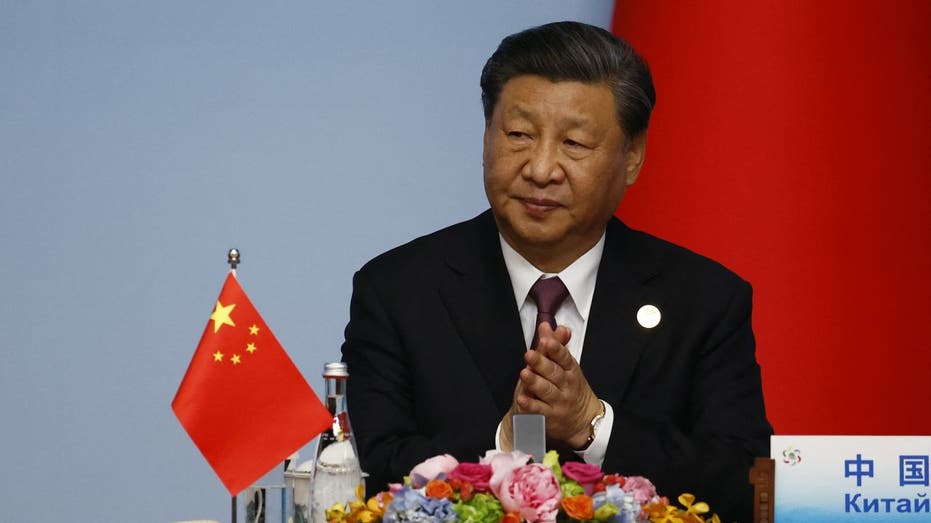
China’s economic issues at home, prioritization of green investment, and exposure to several sovereign-debt defaults across Africa have tightened lenders’ purse strings when it comes to projects like EACOP, says Oyintarelado Moses, an analyst at Boston University’s Global China Initiative.
As Chinese lenders have matured, so has the burden to find commercially viable and high-quality growth opportunities, says Geoffrey Yu, a strategist at BNY Mellon. It remains to be seen whether EACOP meets that definition. It is a capital-intensive pipeline in a frontier market expected to operate for just 20 years, with most of that life cycle coming after peak oil demand, based on IEA forecasts.
In Uganda, there is recognition of why China has delayed EACOP — namely, the faltering economic growth in China that has rattled global markets over the past year. “China has been trying to fix domestic consumption issues,” says Rwabwogo, who along with leading Uganda’s PACEID is the son-in-law of President Museveni.
China also is exhibiting heightened caution, perhaps understandable after its lenders got caught up in distressed debt quagmires from Angola to Zambia. A sticking point since 2021 is Beijing’s demand that loans to Uganda flow through a Chinese escrow account, which would position Chinese lenders as preferential creditors in the case of default, says Henry Musasizi, Uganda’s minister of state for finance, planning, and economic development.
A growth slowdown and reduced risk appetite have led China to retrench financing activities across sub-Saharan Africa, the IMF detailed in October, which is likely to negatively affect African trading partners over the medium term.
“The Chinese have learned that development lending is quite easy, but it’s very risky, and it’s quite hard to collect. It may be what you’re seeing [in EACOP],” says Michael Pettis, a professor of finance at Peking University in Beijing.
Beyond Hoima
Pump Station One is near other construction sites, for Uganda’s second international airport and a refinery project linked to EACOP. An hour’s drive east lies Hoima, a city whose future may rest with Beijing but lacks evidence of China’s footprint beyond a faded billboard on a roundabout with Chinese lettering.
There are no Chinese people living in Hoima, according to Badru Mugabi, the resident city commissioner for Hoima, who said there was one Chinese-owned restaurant here that closed down. “With or without the financing and the pipeline, we will be producing and refining oil for the [African] Great Lakes region,” he says. “Is this about impressing Total or Cnooc, or taking advantage of our resources?”
Uganda needs the dollars that a flowing pipeline will provide. Its government debt in 2024 will approach 50% of gross domestic product, according to International Monetary Fund estimates, the result of spending ramping up since Tullow farmed off oil rights to Total and Cnooc. In 2012, a year before those deals, government debt stood at less than 20% of GDP.
Uganda’s ministry of finance estimates that taxes and dividends from its EACOP stake will net $410 million, though EACOP and associated investments are expected to add some $10 billion to Uganda’s GDP, which the IMF estimates at $57.9 billion for 2024.
But EACOP represents far more to Rwabwogo. The advisor to President Museveni delayed his interview with Barron’s for hours as he darted among meeting rooms in Kampala’s luxurious Sheraton Hotel. When he found time, it was in what appeared to be a wedding tent hours before nuptials .
Uganda hopes to build a railroad, improve roads, develop its mining sector — including in critical minerals — and even nurture a nascent tech industry. “We were asked to do the pipeline because that was the only way we could get investment,” says Rwabwogo. “It’s a bridge to be able to exploit the rest.”
Ugandan officials remain assured that EACOP’s financing will come through. And there has been some progress on the Chinese front. Uganda’s energy minister was invited to China to hash out financing in April, with President Museveni’s office declaring that President Xi has expressed support for EACOP. Niger, in the Sahel region, last month received a $400 million advance payment from one of China’s state-owned petroleum companies for crude soon expected to begin flowing from a pipeline through Benin, local media reported — a sign that Beijing may not have abandoned its African oil strategy.
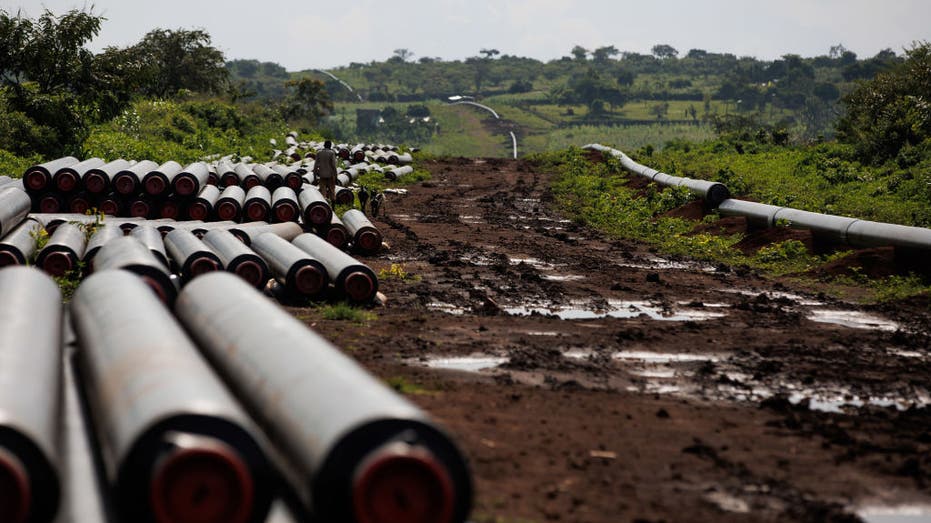
Amid the uncertainty, Rwabwogo has entertained other options. These include turning to markets and borrowing money, he says, or seeking alternative foreign investment. “There are several [in the Persian Gulf] we are speaking to, and a few now committed,” Rwabwogo says, adding that possible financiers are some of the region’s largest crude producers and refiners.
A Persian Gulf rescue for EACOP would dovetail with a shift in geopolitical dynamics in Africa. China made a splash with lavish lending a decade ago, but today, Saudi Arabia, the United Arab Emirates, and Qatar all vie for influence.
Uganda has already had success with a Persian Gulf partner. After failures to find backers for a $4.5 billion refinery project linked to EACOP, Uganda inked a deal in December with a consortium led by Alpha MBM, the family office of the minister of finance for the U.A.E.
While Persian Gulf countries have stepped into the breach to finance African projects, it may not match the scale of China’s past lending, as Saudi Arabia already looks stretched for cash as a result of financing its own large projects.
“We want to evolve our relationship with Africa from foreign aid and assistance to investments, trade, and technical assistance,” says Faisal Alibrahim, Saudi Arabia’s minister of economy and planning.
Back at Pump Station One, work will resume when the weather clears, just as work rolls on along EACOP’s route, burning through diminishing cash and bringing closer the day when a lack of financing reaches crisis point. Under the drumming of the corrugated steel roof, it isn’t just the rain that’s dampening the mood.
Write to Jack Denton at [email protected]
To subscribe to Barron’s, visit http://www.barrons.com/subscribe
Read the full article here

